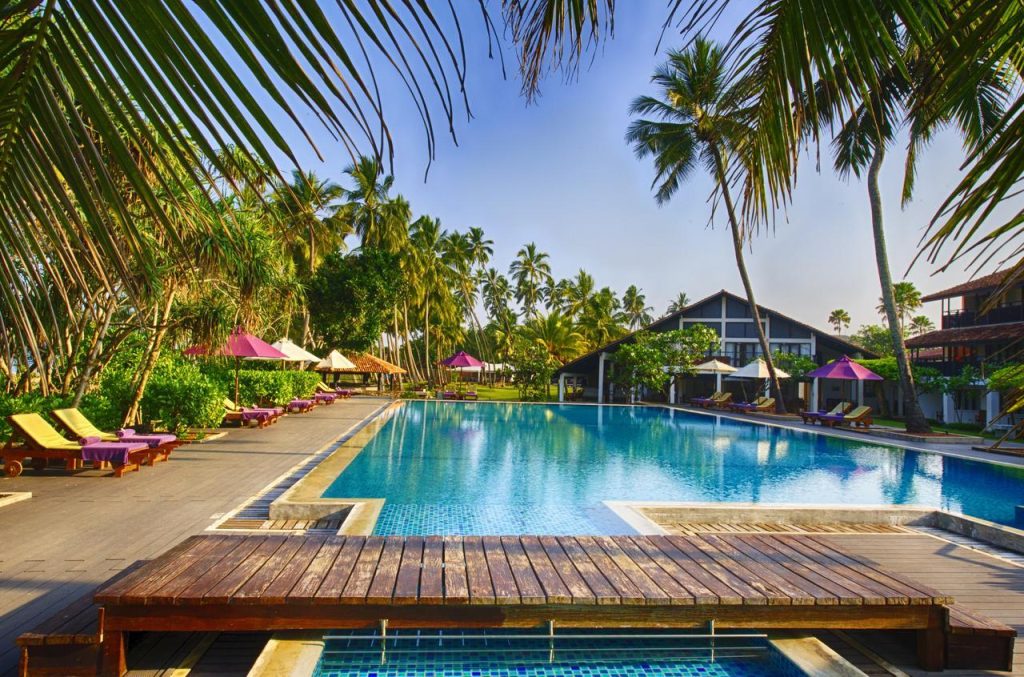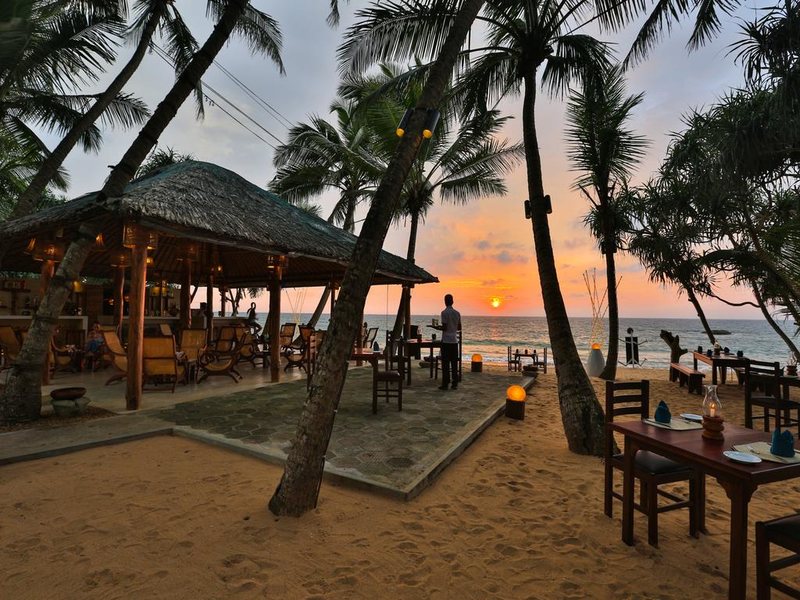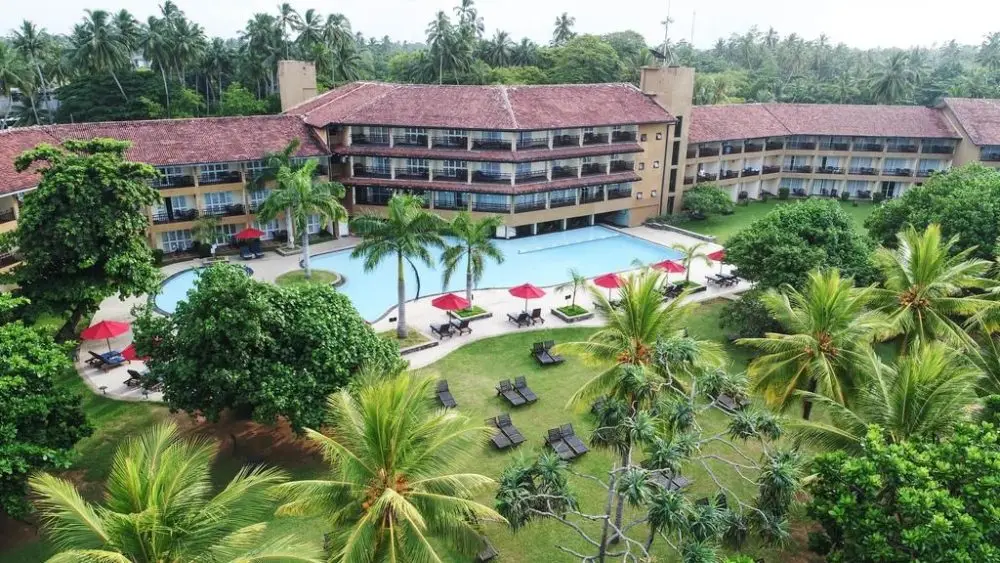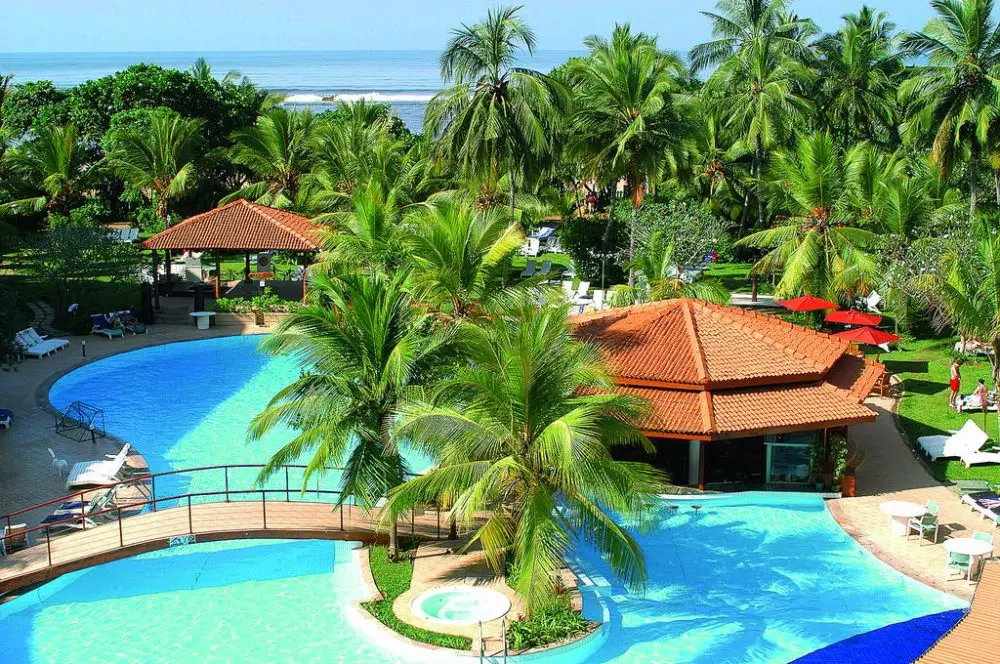Sri Lanka is a true jewel of the Indian Ocean, known for its magnificent beaches, unique nature and rich culture. Sri Lanka’s resorts are ideal for fans of beach relaxation, extreme sports, as well as for family and romantic adventures.

In the article we will tell you about the country’s resort holidays, excursions, hotels and features of the stay.
Resort holidays in Sri Lanka: main features
Sri Lanka is famous for its mild climate, which makes your holiday possible all year round. The island attracts foreigners with its diversity: from secluded to lively tourist areas with developed infrastructure. Thanks to its convenient location, it is easy to get here from Russia: a flight takes about 9-10 hours.
Russians require a visa, which can be obtained online or on arrival.
Popular resorts in Sri Lanka
 Study the features of each to see which one is closer to you.
Study the features of each to see which one is closer to you.
Bentota
Bentota is one of the most famous destinations on the west coast of Sri Lanka. It has wide shores with soft sand and calm ocean, suitable for family trips. The promenades are well-maintained and clean, protected from strong waves, making it a safe place for children. Tourists in Sri Lanka can choose from a variety of hotels, including both 5-star complexes and budget hotels.
Was ist zu tun?
Die Reisenden genießen Bootsfahrten auf den Lagunen und dem Bentota-Fluss, treiben Wassersport wie Surfen und Tauchen und besuchen eine Schildkrötenfarm.
Hikkaduwa
Hikkaduwa is a surfing and diving paradise. A haven that attracts active lifestyle enthusiasts from all over the world. Surfing schools are located here and the coral reefs offer spectacular underwater scenery for diving. For those with a vibrant nightlife, there are plenty of restaurants on the beach. For those who prefer a quieter pastime, Hikkaduwa has cosy cafes and restaurants with local cuisine, as well as souvenir shops.
- What to do?
Diving in Hikkaduwa allows you to see the underwater world with coral gardens and shipwrecks. Catamaran excursions are also popular here. - For whom?
Suitable for both youth groups and family relaxation.
Unawatuna
Unawatuna is a romantic resort on the south coast, near the city of Galle, famous for its wave-protected beaches. Here you can go snorkelling, rent a kayak or simply enjoy the tranquil atmosphere. Unawatuna is suitable for those planning a romantic holiday or a trip with children. One of the best for a honeymoon.
- What attracts tourists?
Snow-white, secluded coves and snorkelling opportunities. - Features
There are many attractions in the surrounding area, including the historic city of Galle.
Arugam Bay
Arugam Bay is an active holiday destination located on the east coast. It is popular among professionals and beginners due to its optimal wave riding conditions. It is ranked among the top 10 surf spots in the world. There are natural attractions around Arugam Bay, such as Pottuvil Lagoon and Kumana National Park, where elephants and other animals can be seen.
- Who is it for?
Tourists looking for waves and an atmosphere of freedom. - Infrastructure
There are hostels for budget travellers as well as comfortable ones.
Negombo
Negombo is for those looking for proximity to Colombo airport. Suitable for a short break before departure or immediately on arrival, its proximity to the capital allows you to combine beach relaxation with sightseeing.
You can visit fish markets, colonial buildings and enjoy fresh seafood dishes.
Features
In Negombo, foreigners enjoy fresh seafood, visit local markets and go fishing.
What to do in Sri Lanka?
- Excursions.
Sri Lanka offers a huge number of sightseeing itineraries: visiting tea plantations, travelling to national parks such as Yala or Udawalawe, and exploring ancient temples. - Beach Leisure.
Almost all are famous for their beaches. Warm water and soft sand create ideal conditions for relaxation. - Active leisure time.
Surfing and diving remain the top activities for those who love movement and adrenaline. - Cultural Tourism.
Holidaymakers visit attractions such as Sigiriya, an ancient rock fortress, and Kandy, a centre of Buddhist culture.
Holidays in Sri Lanka for Russians: useful tips
- Prices for tours to Sri Lanka and Visa. The cost of vouchers depends on the season. In high season prices are higher, but with early booking you can find favourable offers. For Russians, entry to Sri Lanka requires an electronic visa (ETA), its cost depends on the purpose and duration of stay.
- Weather. The island has a tropical climate, so it’s important to consider seasonality. A favourable time for holidays on the west and south coasts is from November to April, and on the east coast from May to October.
- Hotels. When booking, it is important to consider the distance from the ocean shores and the availability of amenities such as a pool or shuttle service. The choice is vast, from luxury all-inclusive hotels to budget hotels in Sri Lanka.
- Safety. Swimming in the ocean is sometimes dangerous due to strong currents, so always watch out for warning signs.
Why choose Sri Lanka?
Sri Lanka offers an incredible diversity: both lovers of relaxing on the warm sand and connoisseurs of a wild time will find their “paradise” here. The island is suitable for family holidays, romantic cruises and even solo trips. Exotic nature, hospitable locals and an abundance of attractions make Sri Lanka an ideal destination.
Conclusion
 A Sri Lanka resort holiday is the epitome of the dream of a flawless holiday. Whether you are looking for peace and tranquillity, or a love adventure, or perhaps extreme sports? This island is sure to fulfil your expectations and provide an unforgettable experience.
A Sri Lanka resort holiday is the epitome of the dream of a flawless holiday. Whether you are looking for peace and tranquillity, or a love adventure, or perhaps extreme sports? This island is sure to fulfil your expectations and provide an unforgettable experience.

Choose your perfect trip, enjoy the warm sand and water, explore the local culture and come back with unforgettable memories!
 en
en  ru
ru  de
de  nl
nl  ar
ar  es
es  fr
fr  hi
hi  it
it  pt
pt  el
el 










